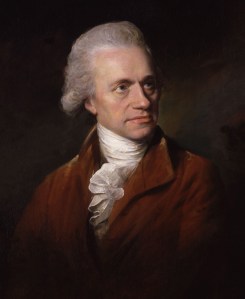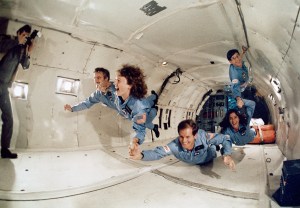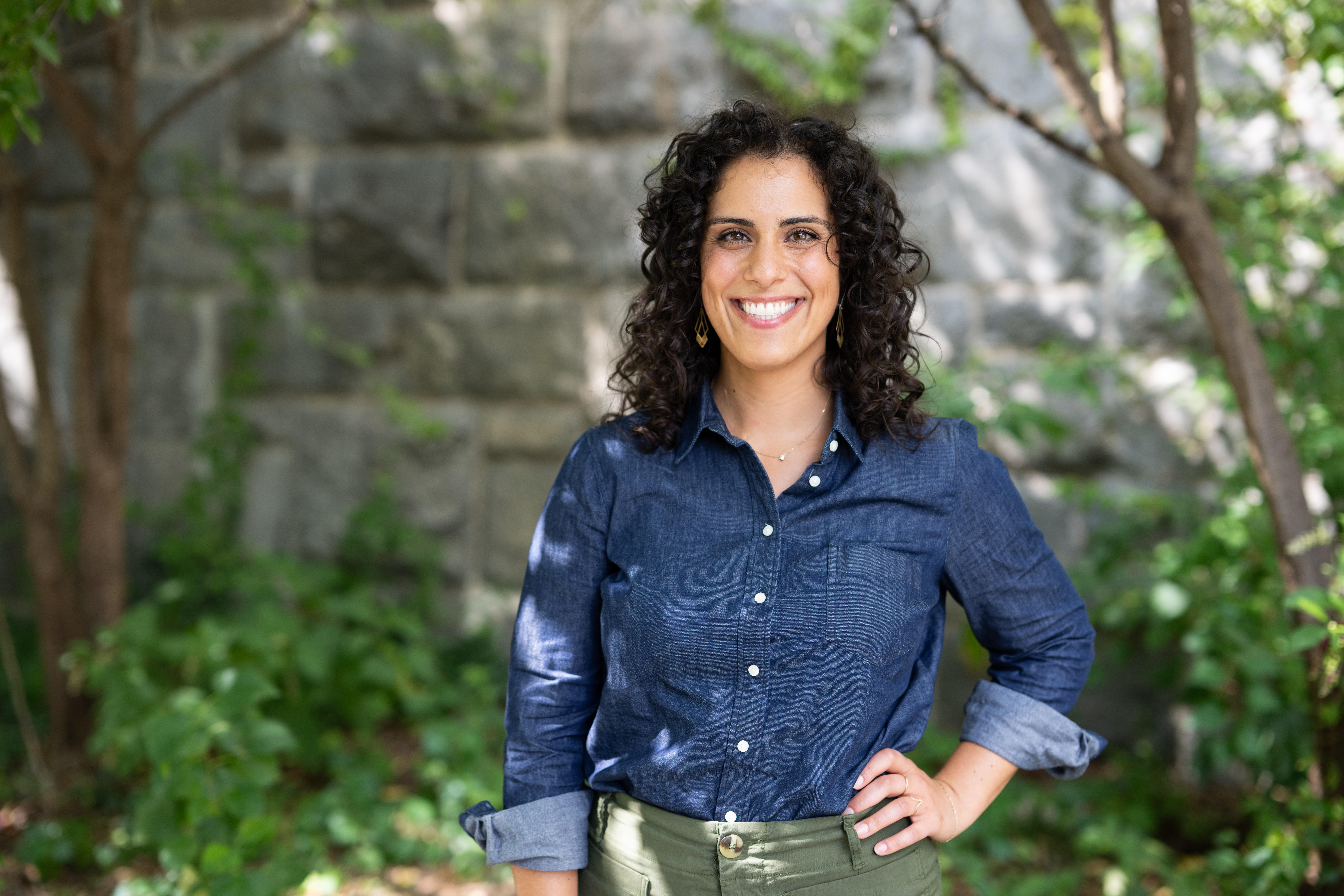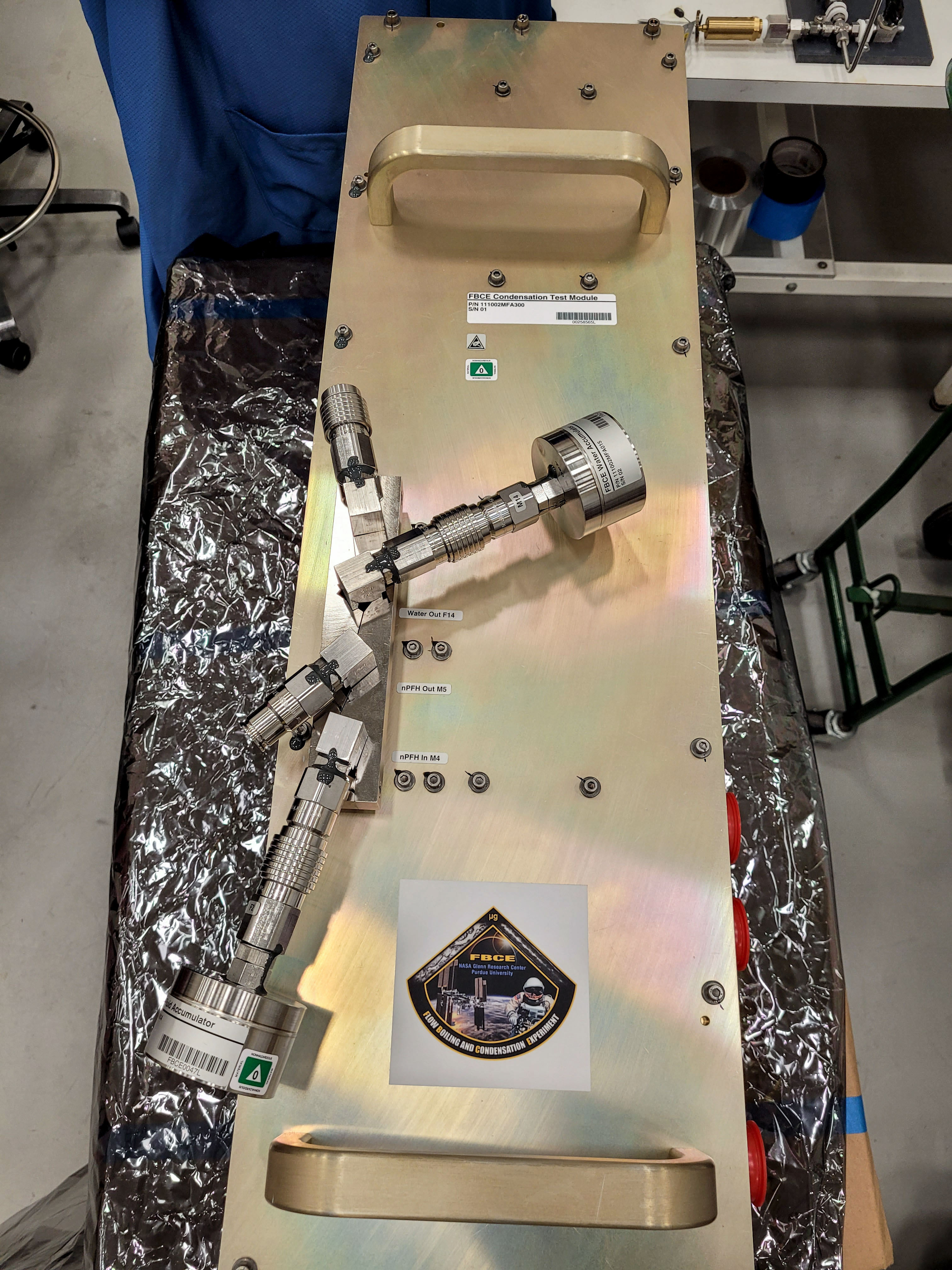40 Years Ago: STS-41D – First Flight of Space Shuttle Discovery
On Aug. 30, 1984, space shuttle Discovery lifted off on the STS-41D mission, joining NASA’s fleet as the third space qualified orbiter. The newest shuttle incorporated newer technologies making it significantly lighter than its two predecessors. Discovery lofted the heaviest payload up to that time in shuttle history. The six-person crew included five NASA astronauts […]
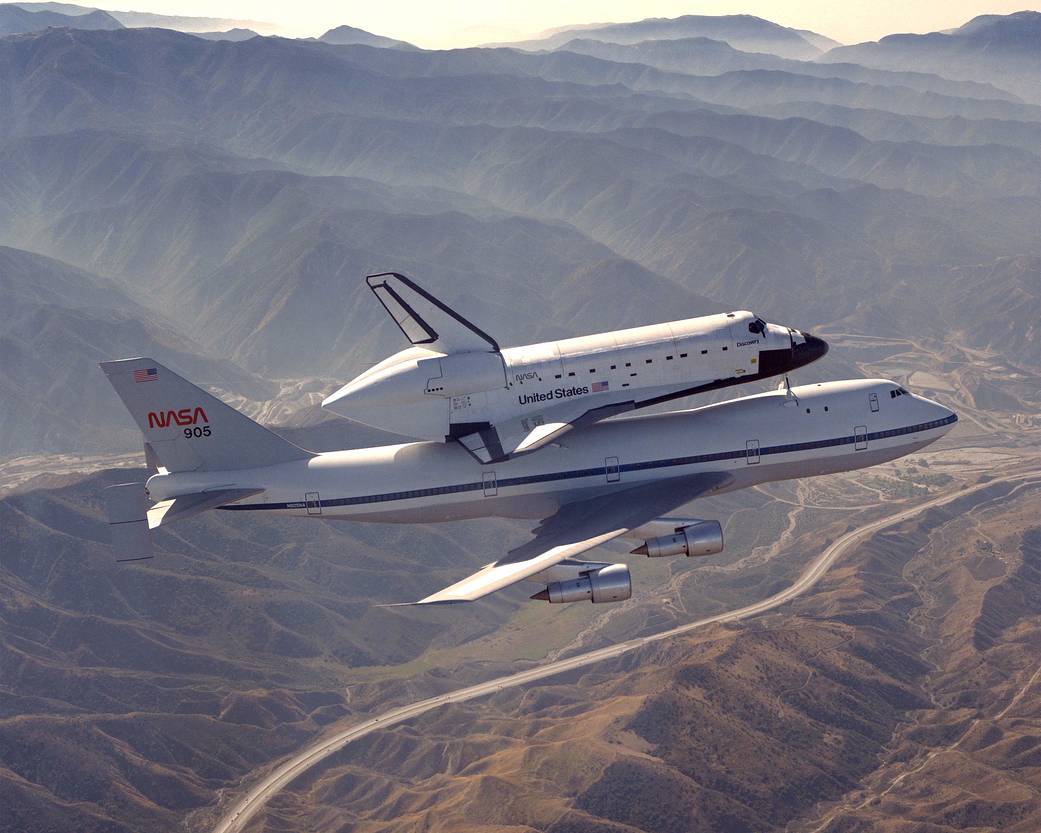
On Aug. 30, 1984, space shuttle Discovery lifted off on the STS-41D mission, joining NASA’s fleet as the third space qualified orbiter. The newest shuttle incorporated newer technologies making it significantly lighter than its two predecessors. Discovery lofted the heaviest payload up to that time in shuttle history. The six-person crew included five NASA astronauts and the first commercial payload specialist. During the six-day mission, the crew deployed a then-record three commercial satellites, tested an experimental solar array, and ran a commercial biotechnology experiment. The astronauts recorded many of the activities using a large format film camera, the scenes later incorporated into a motion picture for public engagement. The mission marked the first of Discovery’s 39 trips to space, the most of any orbiter.


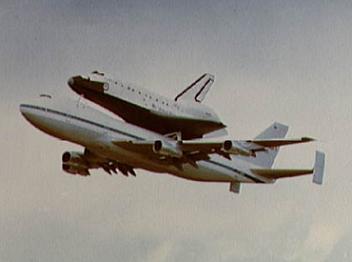
Left: Space shuttle Discovery rolls out of Rockwell’s Palmdale, California, facility. Middle: Discovery atop the Shuttle Carrier Aircraft during the cross-country ferry flight. Right: Discovery arrives at NASA’s Kennedy Space Center in Florida.
Space shuttle Discovery, the third space-qualified orbiter in NASA’s fleet and named after several historical ships of exploration, incorporated manufacturing lessons learned from the first orbiters. In addition, through the use of more advanced materials, the new vehicle weighed nearly 8,000 pounds less than its sister ship Columbia and 700 pounds less than Challenger. Discovery rolled out of Rockwell International’s plant in Palmdale, California, on Oct. 16, 1983. Five of the six crew members assigned to its first flight attended the ceremony. Workers trucked Discovery overland from Palmdale to NASA’s Dryden, now Armstrong, Flight Research Center at Edwards Air Force Base (AFB), where they mounted it atop a Shuttle Carrier Aircraft (SCA), a modified Boeing 747, for the transcontinental ferry flight to NASA’s Kennedy Space Center (KSC) in Florida. Discovery arrived at KSC on Nov. 9 following a two-day stopover at Vandenberg Air Force, now Space Force Base, in California.

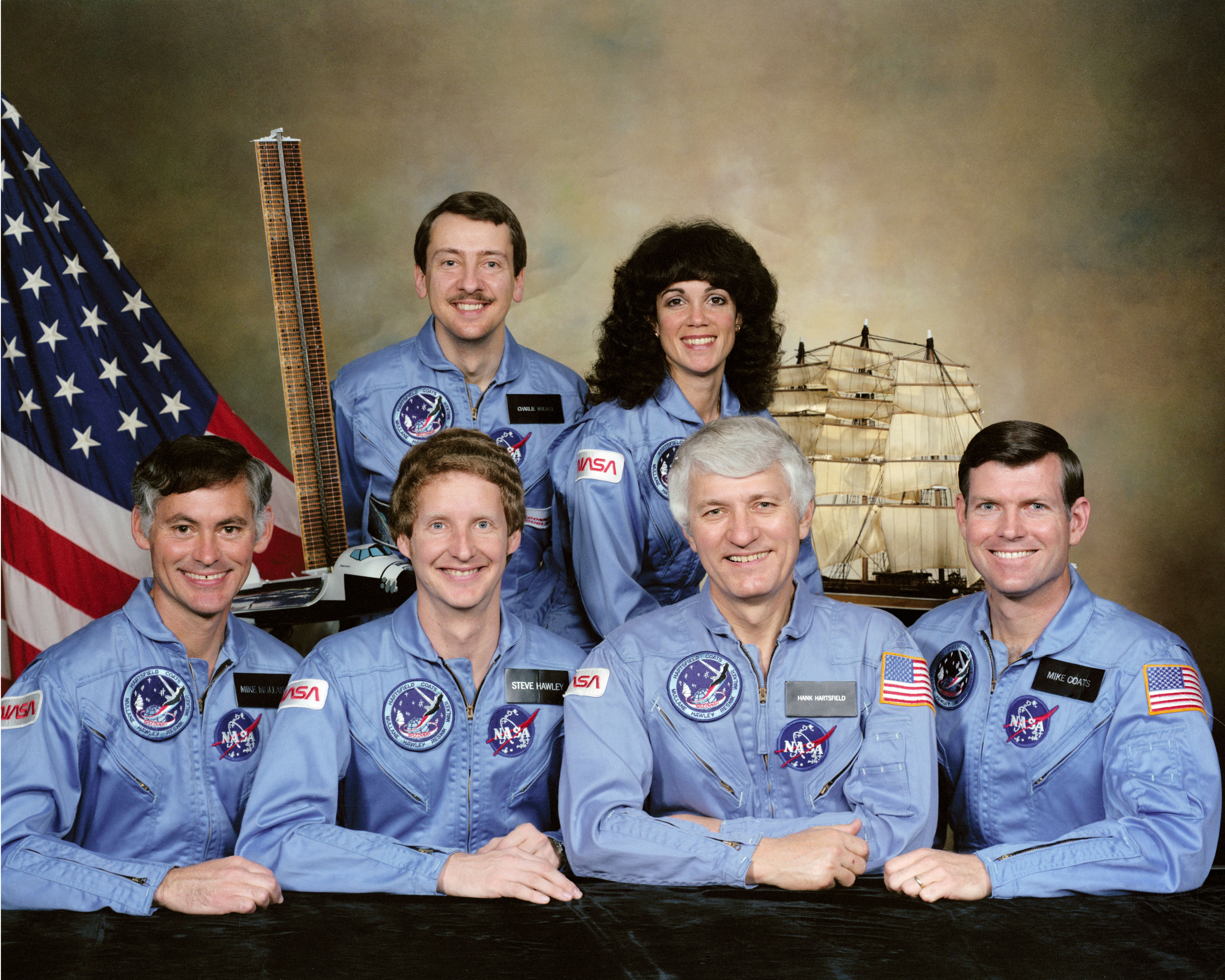
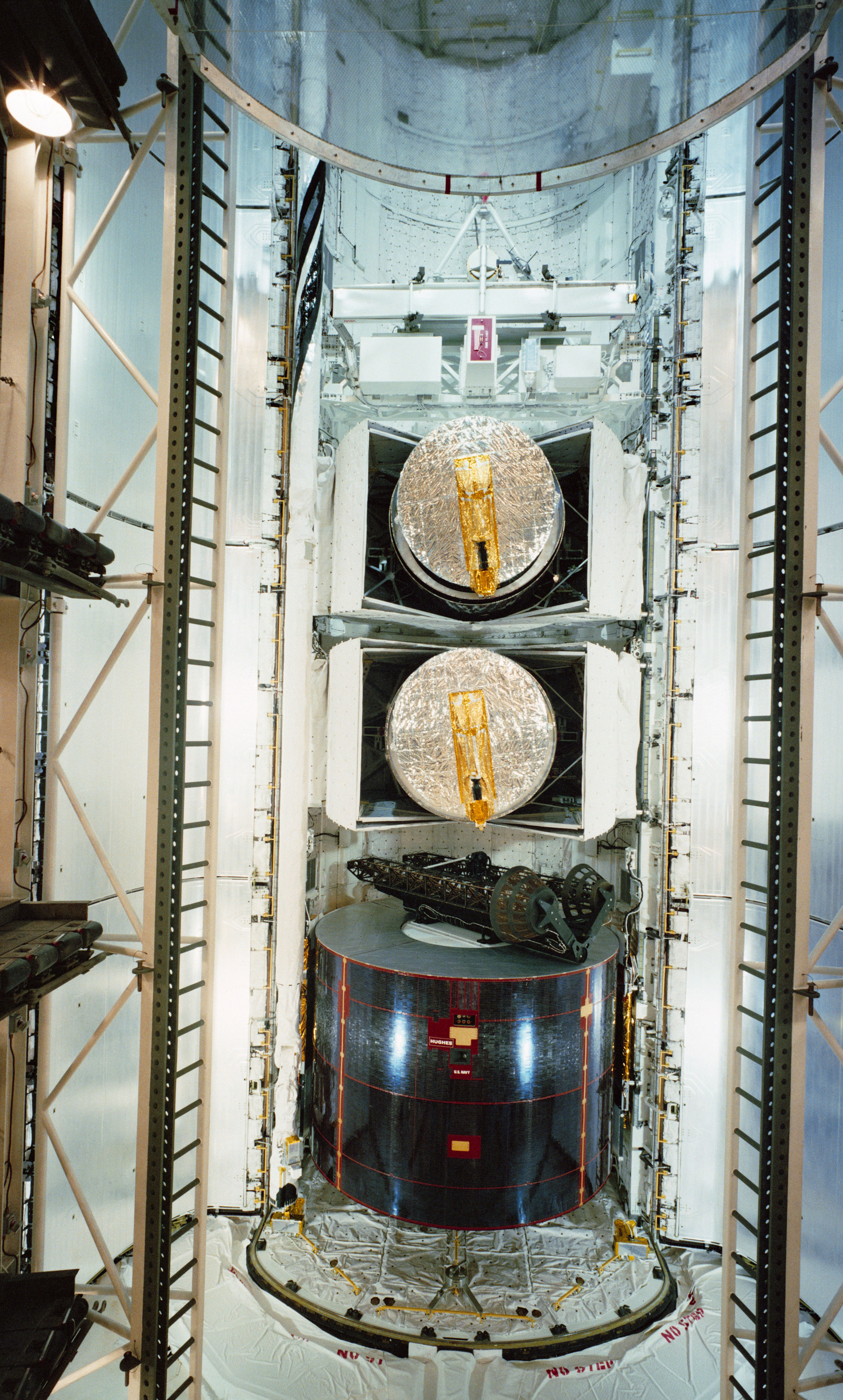
Left: STS-41D crew patch. Middle: Official photograph of the STS-41D crew of R. Michael “Mike” Mullane, front row left, Steven A. Hawley, Henry “Hank” W. Hartsfield, and Michael L. Coats; Charles D. Walker, back row left, and Judith A. Resnik. Right: Payloads installed in Discovery’s payload bay for the STS-41D mission include OAST-1, top, SBS-4, Telstar 3C, and Leasat-2.
To fly Discovery’s first flight, originally designated STS-12 and later renamed STS-41D, in February 1983 NASA assigned Commander Henry W. Hartsfield, a veteran of STS-4, and first-time flyers Pilot Michael L. Coats, and Mission Specialists R. Michael Mullane, Steven A. Hawley, and Judith A. Resnik, all from the 1978 class of astronauts and making their first spaceflights. In May 1983, NASA announced the addition of Charles D. Walker, an employee of the McDonnell Douglas Corporation, to the crew, flying as the first commercial payload specialist. He would operate the company’s Continuous Flow Electrophoresis System (CFES) experiment. The mission’s primary payloads included the Leasat-1 (formerly known as Syncom IV-1) commercial communications satellite and OAST-1, three experiments from NASA’s Office of Aeronautics and Space Technology, including the Solar Array Experiment, a 105-foot long lightweight deployable and retractable solar array. Following the June 1984 launch abort, NASA canceled the STS-41F mission, combining its payloads with STS-41D’s, resulting in three communications satellites – SBS-4 for Small Business Systems, Telstar 3C for AT&T, and Leasat 2 (Syncom IV-2) for the U.S. Navy – launching on the flight. The combined cargo weighed 41,184 pounds, the heaviest of the shuttle program up to that time. A large format IMAX® camera, making its second trip into space aboard the shuttle, flew in the middeck to film scenes inside the orbiter and out the windows.
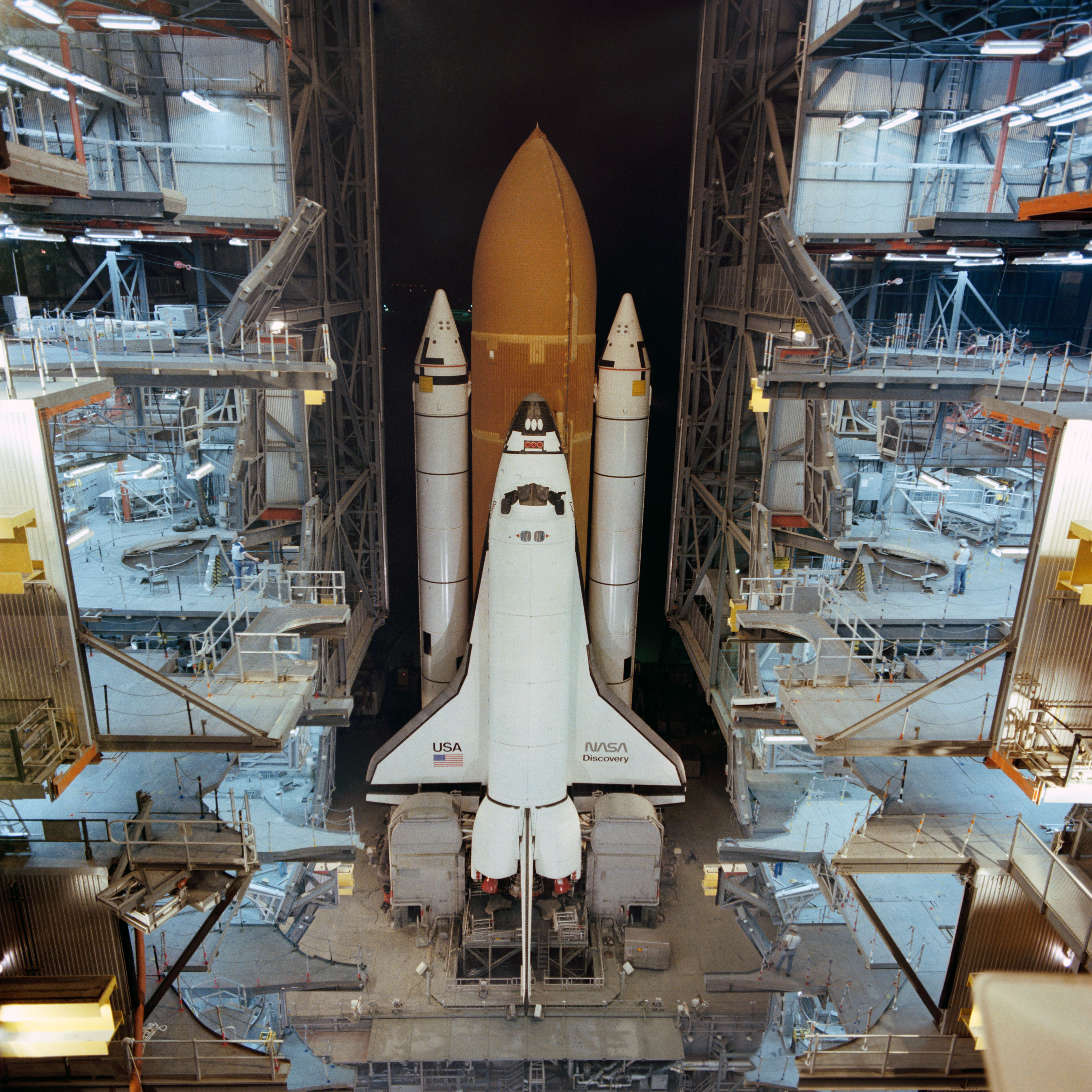

Left: First rollout of Discovery from the Vehicle Assembly Building at NASA’s Kennedy Space Center in Florida. Right: The June 26 launch abort.
The day after its arrival at KSC, workers towed Discovery to the Orbiter Processing Facility (OPF) to begin preparing it for its first space flight. They towed it to the Vehicle Assembly Building (VAB) on May 12, 1984, for mating with its External Tank (ET) and Solid Rocket Boosters (SRBs). The completed stack rolled out to Launch Pad 39A a week later. On June 2, engineers successfully completed an 18-second Flight Readiness Firing of Discovery’s main engines. Post test inspections revealed a debonding of a thermal shield in main engine number 1’s combustion chamber, requiring its replacement at the pad. The work pushed the planned launch date back three days to June 25. The failure of the shuttle’s backup General Purpose Computer (GPC) delayed the launch by one day. The June 26 launch attempt ended just four seconds before liftoff, after two of the main engines had already ignited. The GPC detected that the third engine had not started and shut all three down. It marked the first time a human spaceflight launch experienced an abort after the start of its engines since Gemini VI in October 1965. The abort necessitated a rollback to the VAB on July 14 where workers demated Discovery from the ET and SRBs. Engineers replaced the faulty engine, and Discovery rolled back out to the launch pad on Aug. 9 for another launch attempt. The six-person crew participated in the Terminal Countdown Demonstration Test, essentially a dress rehearsal for the actual countdown to launch, on Aug. 15. A software issue delayed the first launch attempt on Aug. 29 by one day.
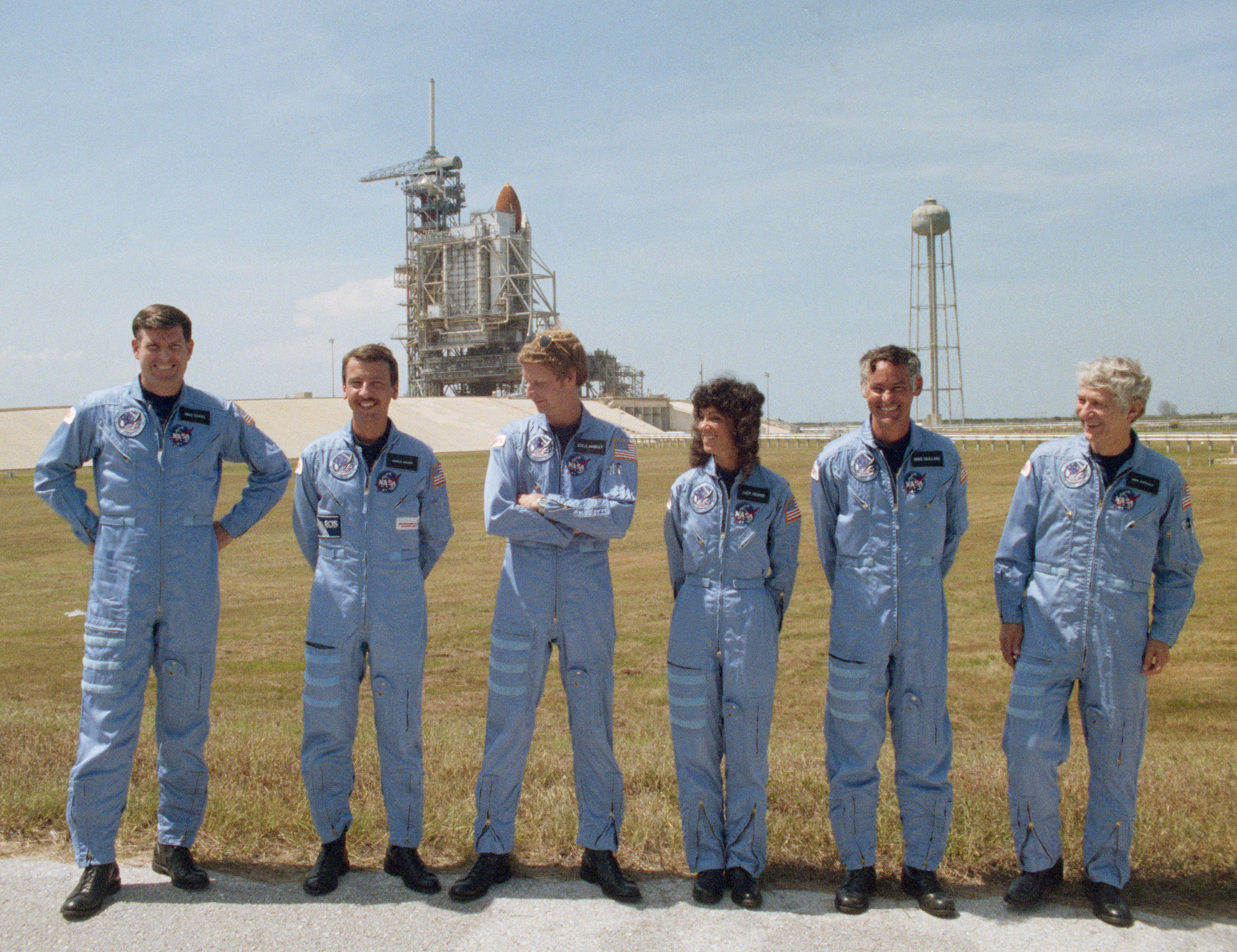

Left: The STS-41D crew pose at Launch Pad 39A at NASA’s Kennedy Space Center in Florida following the Terminal Countdown Demonstration Test. Right: Liftoff of Discovery on the STS-41D mission.
Finally, on Aug. 30, 1984, Discovery roared off its launch pad on a pillar of flame and within 8 and a half minutes entered orbit around the Earth. The crew got down to work and on the first day Mullane and Hawley deployed the SBS-4 satellite. On the second day in space, they deployed Leasat, the first satellite designed specifically to be launched from the shuttle. On the third day, they deployed the Telstar satellite, completing the satellite delivery objectives of the mission. Resnik deployed the OAST-1 solar array to 70% of its length to conduct dynamic tests on the structure. On the fourth day, she deployed the solar array to its full length and successfully retracted it, completing all objectives for that experiment.

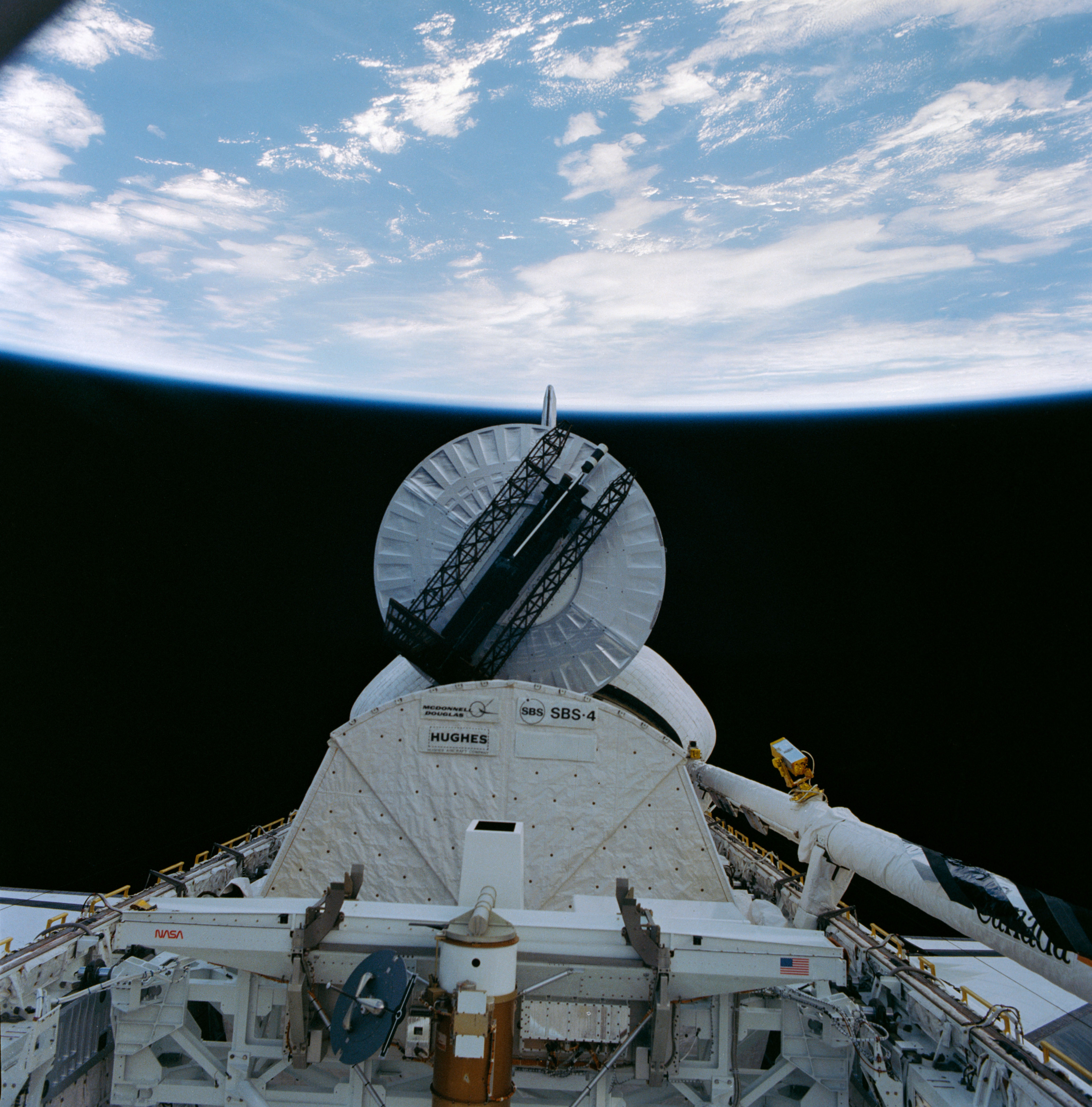

The deployment of the SBS-4, left, Leasat-2, and Telstar 3C satellites during STS-41D.
Walker remained busy with the CFES, operating the unit for about 100 hours, and although the experiment experienced two unexpected shutdowns, he processed about 85% of the planned samples. Hartsfield and Coats exposed two magazines and six rolls of IMAX® film, recording OAST-1 and satellite deployments as well as in-cabin crew activities. Clips from the mission appear in the 1985 IMAX® film “The Dream is Alive.” On the mission’s fifth day, concern arose over the formation of ice on the orbiter’s waste dump nozzle. The next day, Hartsfield used the shuttle’s robotic arm to dislodge the large chunk of ice.



Left: Payload Specialist Charles D. Walker in front of the Continuous Flow Experiment System. Middle: Henry “Hank” W. Hartsfield loading film into the IMAX® camera. Right: The OAST-1 Solar Array Experiment extended from Discovery’s payload bay.
On Sep. 5, the astronauts closed Discovery’s payload bay doors in preparation for reentry. They fired the shuttle’s Orbital Maneuvering System engines to slow their velocity and begin their descent back to Earth. Hartsfield guided Discovery to a smooth landing at Edwards AFB in California, completing a flight of 6 days and 56 minutes. The crew had traveled 2.5 million miles and orbited the Earth 97 times.


Left: The STS-41D crew pose in Discovery’s middeck. Right: Space shuttle Discovery makes a perfect landing at Edwards Air Force Base in California to end the STS-41D mission.
By Sept. 10, workers had returned Discovery to KSC to prepare it for its next mission, STS-51A, in November 1984. During its lifetime, Discovery flew a fleet leading 39 missions, making its final trip to space in February 2011. It flew both return to flight missions, STS-26 in 1988 and STS-114 in 2005. It launched the Hubble Space Telescope in 1990 and flew two of the missions to service the facility. Discovery flew two mission to Mir, docking once. It completed the first docking to the International Space Station in 1999 and flew a total of 13 assembly and resupply missions to the orbiting lab. By its last mission, Discovery had traveled 149 million miles, completed 5,830 orbits of the Earth, and spent a cumulative 365 days in space in the span of 27 years. The public can view Discovery on display at the National Air and Space Museum’s Stephen F. Udvar-Hazy Center in Chantilly, Virginia.
Read recollections of the STS-41D mission by Hartsfield, Coats, Mullane, Hawley, and Walker in their oral histories with the JSC History Office. Enjoy the crew’s narration of a video about the STS-41D mission.
What's Your Reaction?



















.jpg?#)























